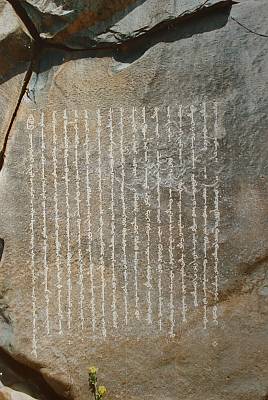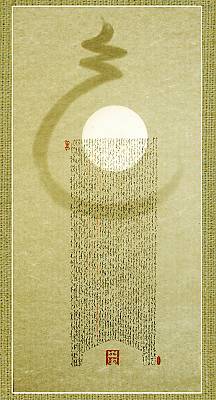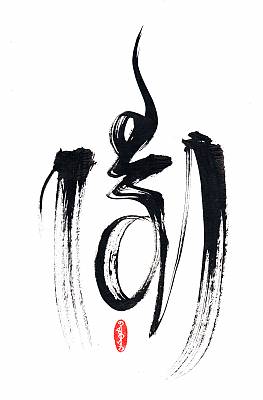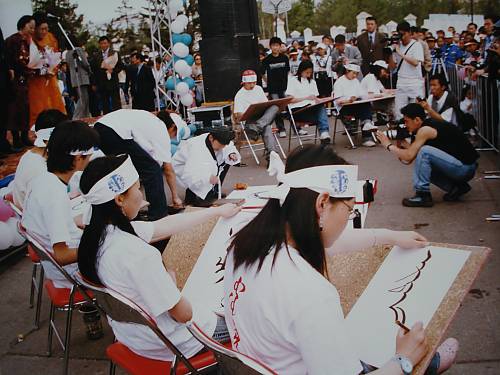Mongolian calligraphy
Inscribed in 2013 (8.COM) on the List of Intangible Cultural Heritage in Need of Urgent Safeguarding
Country(ies): Mongolia
Identification
Description

- Mongolian calligraphy
- © 2010 by Jalair Batbayar D./Mongolian Calligraphy
Mongolian calligraphy is the technique of handwriting in the Classical Mongolian script, which comprises ninety letters connected vertically by continuous strokes to create words. The letters are formed from six main strokes, known as head, tooth, stem, stomach, bow and tail, respectively. This meticulous writing is used for official letters, invitations, diplomatic correspondence and love letters; for a form of shorthand known as synchronic writing; and for emblems, logos, coins and stamps in ‘folded’ forms. Traditionally, mentors select the best students and train them to be calligraphers over a period of five to eight years. Students and teachers bond for life and continue to stimulate each other’s artistic endeavours. The rate of social transformation, urbanization and globalization have led to a significant drop in the number of young calligraphers. At present, only three middle-aged scholars voluntarily train the small community of just over twenty young calligraphers. Moreover, increases in the cost of living mean that mentors can no longer afford to teach the younger generation without remuneration. Special measures are therefore needed to attract young people to the traditional art of writing and to safeguard and revitalize the tradition of Mongolian script and calligraphy.
Documents
- Nomination form: English|French
- Consent of communities: English/Mongolian
- ICH inventory: English/Mongolian
Decision 8.COM 7.a.9
The Committee (…) decides that [this element] satisfies the criteria for inscription on the List of Intangible Cultural Heritage in Need of Urgent Safeguarding, as follows:
- U1: Mongolian calligraphy provides a sense of identity and historical continuity to Mongolian people at large; revived with the establishment of democracy in the 1990s, the practice has pertinent social and economic functions for its bearers in the contemporary context;
- U2: The viability of Mongolian calligraphy is at risk because of the limited number of tradition bearers who transmit their knowledge, the absence of appropriate safeguarding policies and the lack of interest by the young generation;
- U3: The safeguarding measures include training, publication of teaching materials, research, documentation, and awareness raising; past experiences and safeguarding activities increase the feasibility of the proposed measures;
- U4: The nomination process benefitted from the participation of calligraphers’ organizations, research institutions and government bodies and their free, prior and informed consent is demonstrated, albeit using Cyrillic script and not Classical Mongolian script;
- U5: Mongolian calligraphy is included in the National List of Intangible Cultural Heritage in Need of Urgent Safeguarding, most recently updated in 2011; the Cultural Heritage Centre of the Ministry of Culture, Sports and Tourism also includes information and documentation about the practice;
Notes that Mongolian calligraphy has experienced a rebirth since the democratization of Mongolia in the 1990s, after decades of suppression;
Invites the State Party to promote teaching of reading and writing of Classical Mongolian script in schools;
Encourages the State Party to take more fully into account calligraphy practised by individuals outside formal and institutionalized settings, since their contribution is important for the viability of the practice;
Further encourages the State Party to consider the remarks of the Consultative Body in 2011 regarding the safeguarding plan, particularly as concerns the sources of funding, and to include knowledge of papermaking, brush-making and other related skills among the safeguarding efforts.
Slideshow
Video
© 2011 by “AC” Calligraphy center, “Great Hunnu” Pictures
These videos (and many more) can also be consulted through the UNESCO Archives Multimedia website











